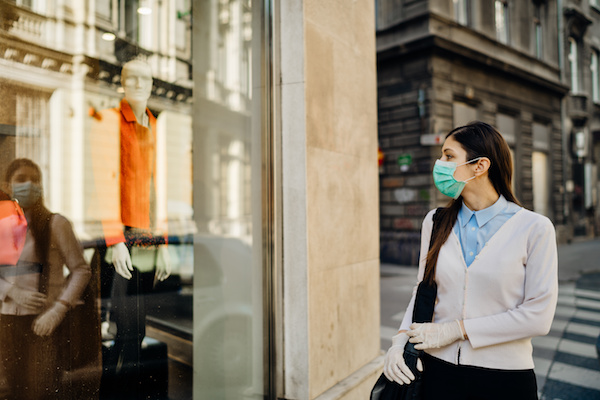
As a result of the COVID-19 pandemic, we have all had to make changes to our everyday lives. Some people have only had to make small adjustments, whereas others have had to make significant alterations. Some of us can’t dine at our favorite restaurant, visit with friends or even go to work. But we all recognize that in these extraordinary times, these adjustments are necessary.
Aside from the evident impact on society and economies, there are other resulting changes occurring, too. With schools closed, people working from home, and live events canceled, a collateral benefit has emerged. The environment around us is improving.
Less traffic, cleaner air.
There are three main contributors to carbon emissions: aviation, car travel, and animal products. It doesn’t take a climatologist to work out that with far fewer people flying and driving around in cars, emissions are way down. Recent nitrogen dioxide measurements, taken by satellite, show dramatic decreases. The fewer cars on the road, the less harmful CO2 there is in the atmosphere. Cleaner air can only be considered a good thing. However, it remains to be seen what the long term benefits might be. Also, as restrictions ease, will changes to people’s automobile usage continue? In the short to medium term, an improvement in air quality can be appreciated. Those with respiratory conditions would undoubtedly agree.
Less paper, more emails and digital.
The shift to home working for many office staff across the world can be looked at from a positive angle, too. Office paper usage in developed countries has decreased by almost 30%. As restrictions ease, there aren’t any signs to indicate that demand is going to return to previous levels. It’s not just offices that are drastically reducing their paper usage. Direct mail and other promotional materials have all but disappeared in some places. The reduction of marketing printing has a double benefit as CO2 emissions, created by delivery vehicles, have also reduced. Since the switch to home-working, electronic methods have replaced paper. There is now a greater reliance on email, instant messaging, and video calling. Additionally, people are not sending as many greeting cards since the beginning of the pandemic; they are now opting for alternative, interactive communication methods. Many are likely to be sending their Christmas cards online this year.
Fewer people, thriving wildlife.
Lockdown has posed many challenges to the natural world. Conservation programs have struggled to secure funding from governments and private donors. However, there have been numerous positives, too. National Parks across the country and world were closed at the height of the pandemic. This lack of human interference and the resulting natural calm has meant that wildlife has thrived. Bears in Yosemite, California and lions in Kruger, South Africa have all been roaming into the spaces usually reserved for human visitors. The number of people attending National Parks had been rising steadily over the past several years. COVID-19 put an abrupt halt to that. Now wildlife is free to go about their natural lives with minimal human interaction. The quieter, calmer setting means wild population numbers are steadily increasing. As a result, this period of human-free activity may well have a lasting benefit. Conservationists will be able to assess the wildlife and develop strategies that will protect their adapted conditions and habitats for when humans visit once again.
To sum it up.
COVID-19 has brought many challenges to every walk of life. However, it is essential to adopt a positive outlook in these times. As this article has demonstrated, there are many environmental benefits for humans, wildlife, and the planet to enjoy. Cleaner air, lower emissions, thriving wildlife, and less wastage are all pluses to be appreciated. It could be argued that now is the time for governments and large companies to carry the momentum of environmental change forward. Governments are going to need to create enormous economic stimulus packages to help heal some of the damage caused by COVID-19. There is a real opportunity to include clean energy technology to capitalize and pay long-term dividends.
Large, industrial corporations, notorious for their harmful pollutants, should also take a moment to think. Many of these organizations stopped or scaled back output at the height of the pandemic. Global carbon emissions fell by 17% in April 2020, mainly because heavy industry limited production. As these organizations consider a return to previous levels, they should be encouraged and incentivized to seek alternatives that are eco-friendly and sustainable.
It is said that every cloud has a silver lining. In the case of COVID-19 and its impact on the environment, it might just be a green one.
The post How Social Distancing Is Helping The Environment appeared first on Young Upstarts.
from Young Upstarts https://ift.tt/34KTPra via website design phoenix

No comments:
Post a Comment